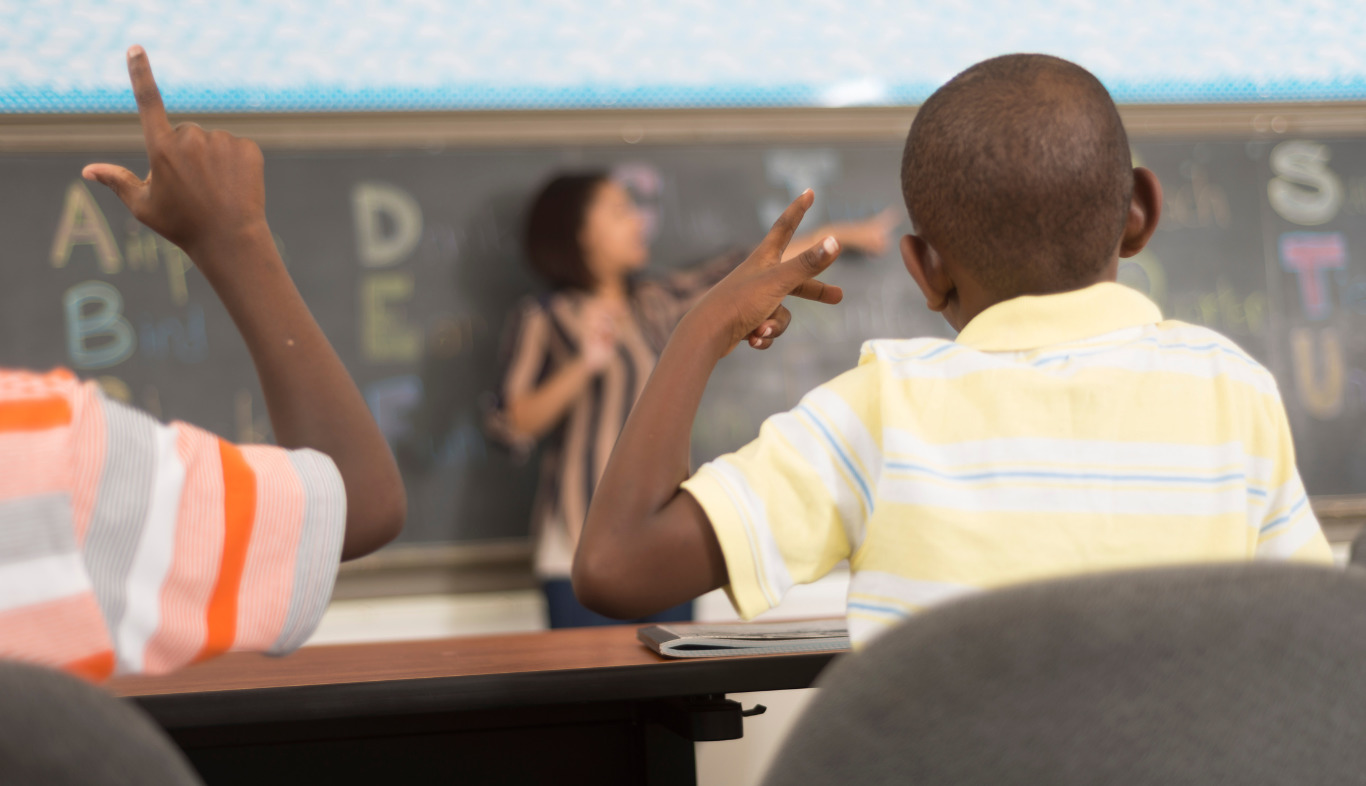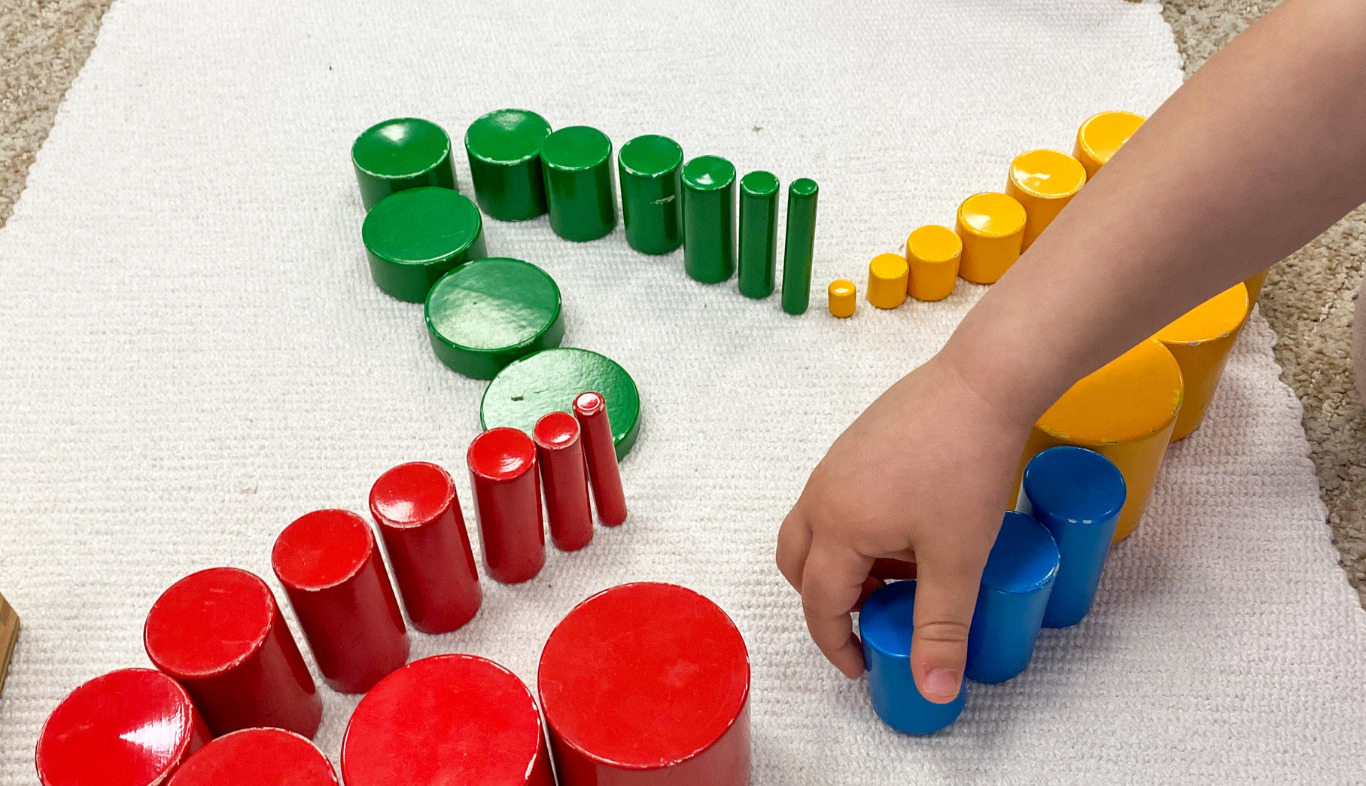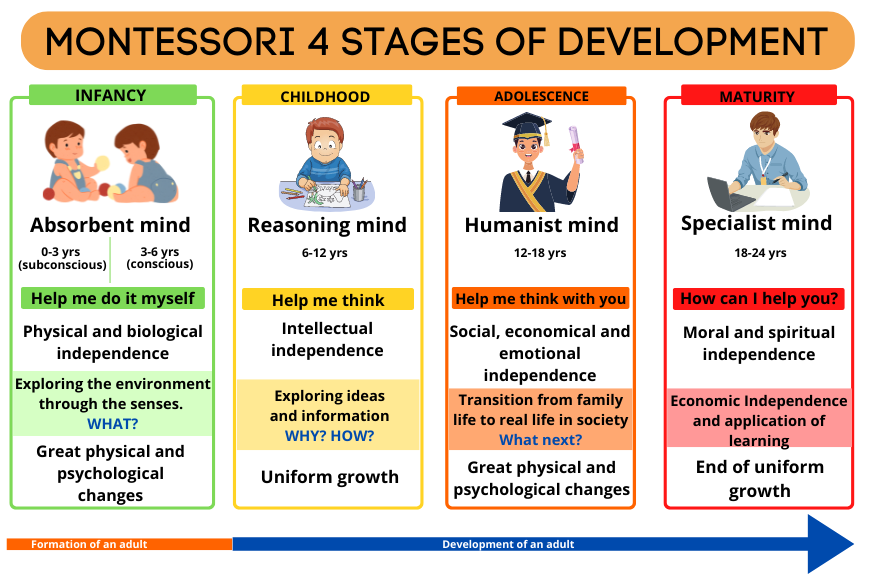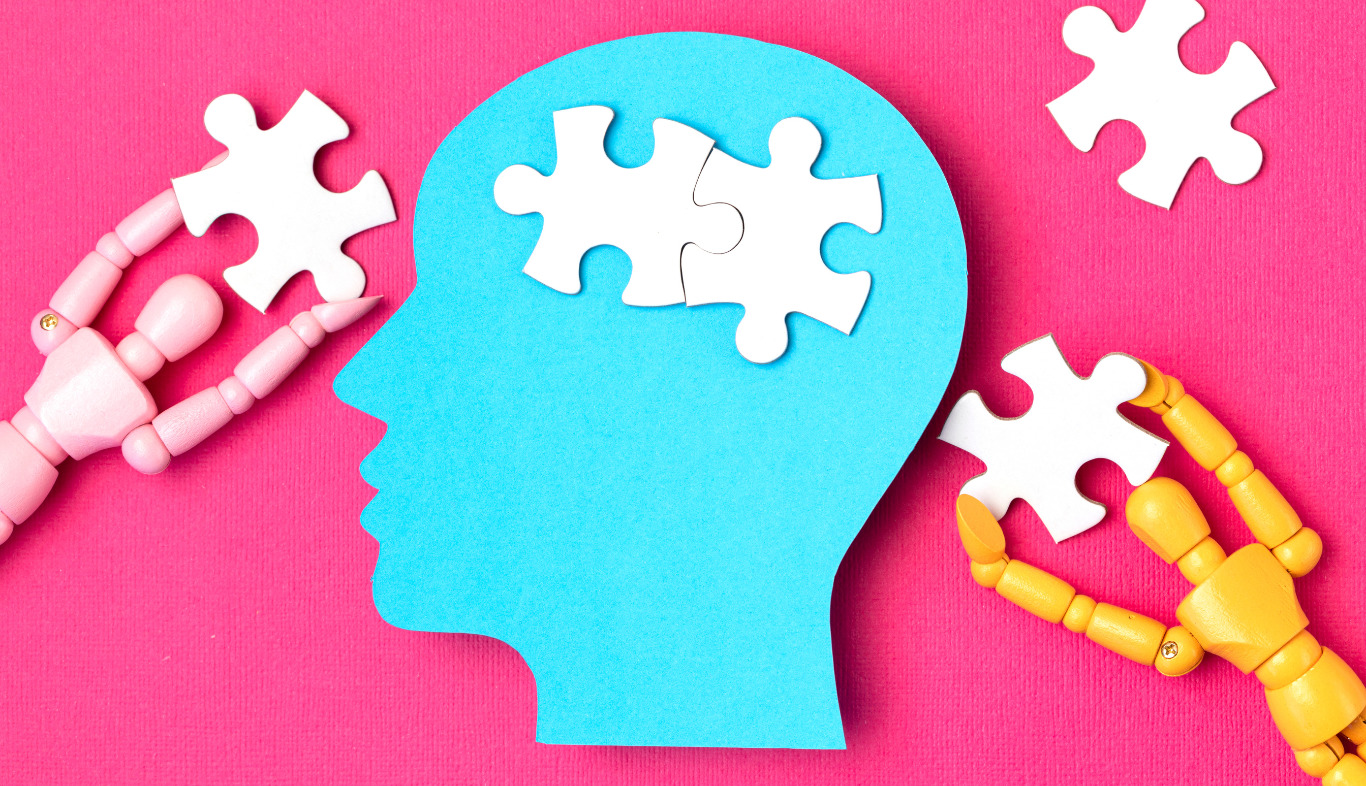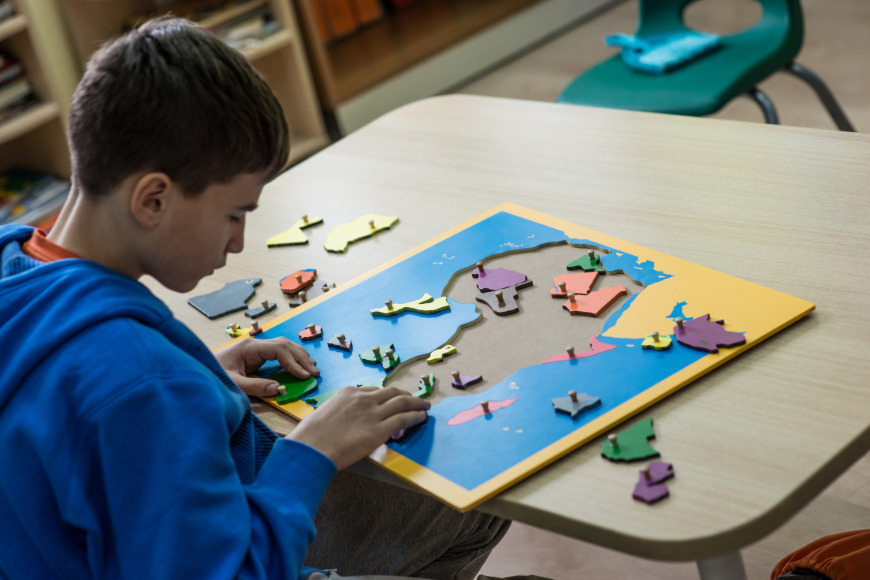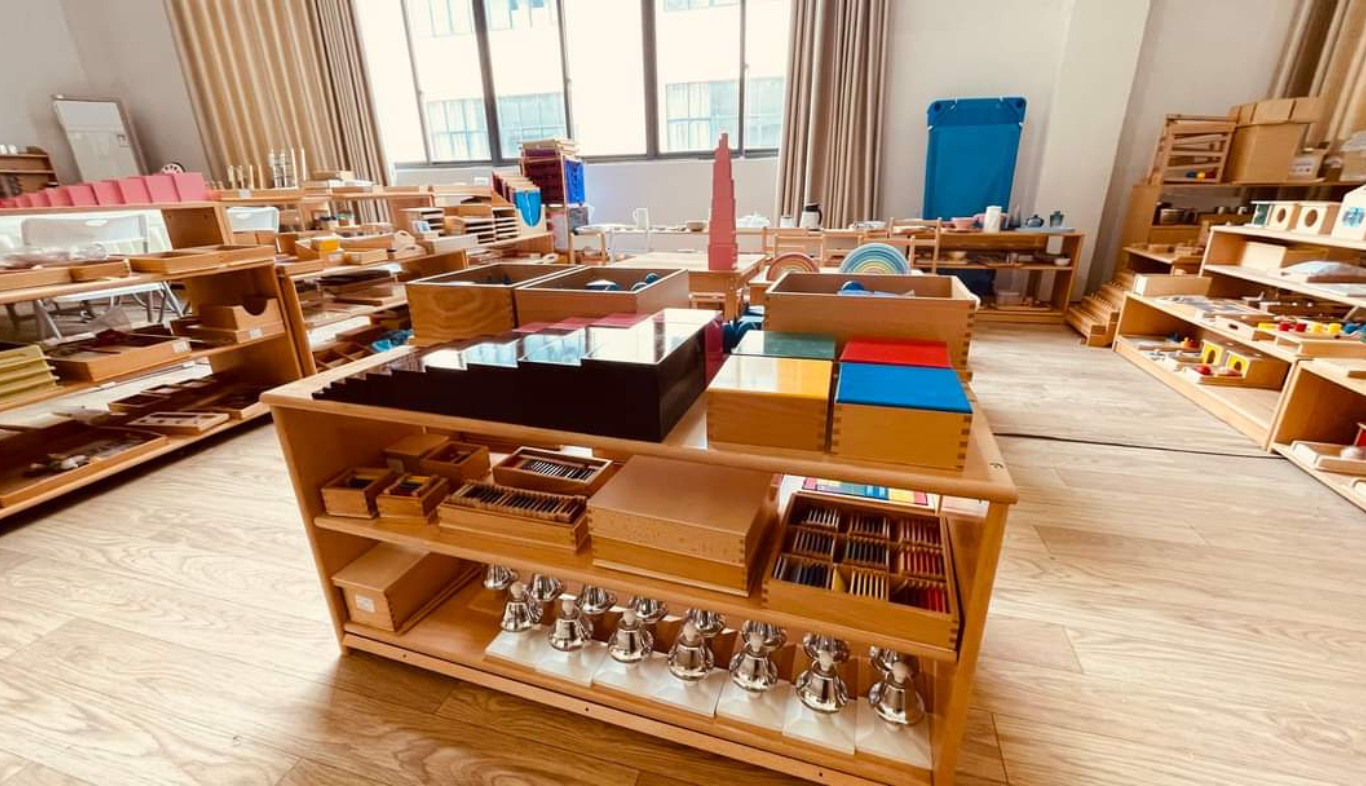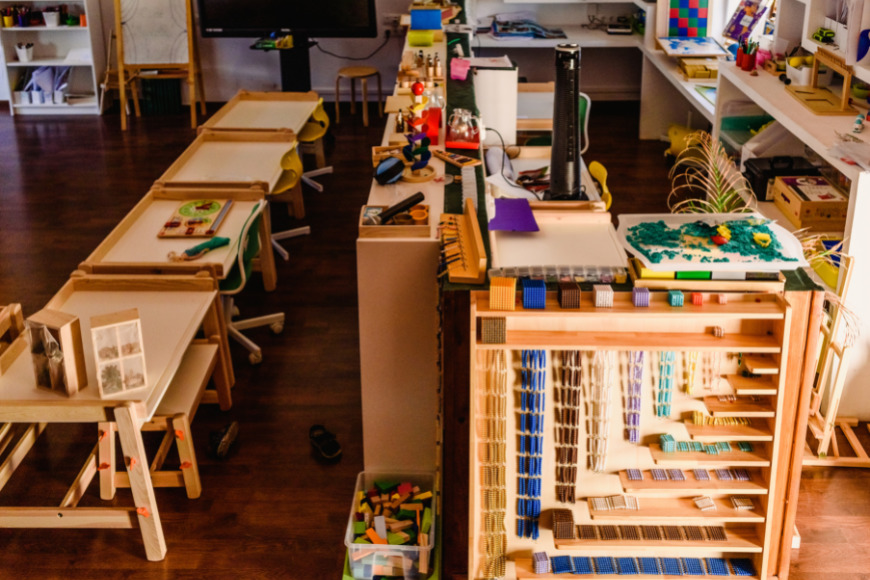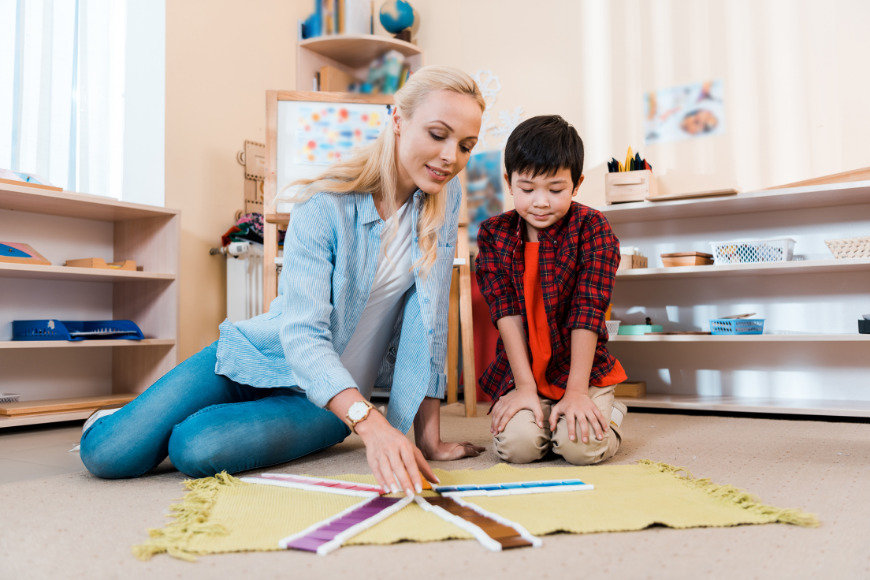Education reforms in the 21st century, along with changing needs and diversity in the classroom, require varied and effective teaching methods to provide meaningful learning experiences for children. A comprehensive, inclusive setting emphasizes more than just teaching the entire class.
In an article from 2012 published in the Electronic Journal of Inclusive Education, authors Virginia Heslinga and Erica Nevenglosky detail the challenges that schools are facing to make learning environments more inclusive by meeting the diverse needs of students. Educators and administrators acknowledge the reality of different learning styles and recognize the need for interactive learning that engages visual, auditory, spatial, linear, tactile, and kinetic styles of learning.
Thus, adding sign language as an additional language can promote a positive learning attitude to a classroom because it fulfills students’ various needs and styles. Learning sign language is a social-emotional learning experience that introduces students to a new perspective through a new language and culture. It also helps students improve their skills in writing, reading, and spelling or vocabulary.
What is Sign Language?
Sign language is any form of bodily communication, particularly using the hands, gestures, arms, and facial expressions. At times, when it is difficult to communicate through words, teachers prefer using sign language. Simple smirks, nods, or indications can be used to express sign language in a basic manner. Pressing the index finger against the lips to hush noisy children, raising hands to speak, and shaking hands to say hello are a few basic forms of sign language. Apart from facilitating communication with people from other regions, sign language also aids children and adults in a variety of areas.
There is no single cross-cultural sign language and according to an article from the AI-Media, the number of official sign languages used around the world today ranges from 138 to 300. The most common forms of sign language are American Sign Language (ASL), British Sign Language (BSL), and Australian Sign Language (Auslan).
Sign language can be utilized to bridge the gap when vocal communication is not possible, such as between speakers of mutually unintelligible languages or when one or more potential communicators have hearing difficulties.
How Does American Sign Language (ASL) help in Fulfilling the Needs of a Diversified Classroom?
American Sign Language has a long-term positive effect on a child’s confidence and self-esteem by improving their communication skills. Exposing children to this form of language may enhance their vocabulary and reading skills, which in turn may lead to better achievement academically. It benefits not only children with hearing disabilities, but also other children to communicate in a more effective way.
Benefits of American Sign Language
In early childhood education, introducing sign language has numerous benefits. Introducing American Sign language (ASL) in a diversified classroom helps in the following ways:
- Gestures and signs usually make things easier for children to understand. As their vocabulary expands, both their receptive and expressive abilities improve. They learn that speech can be represented with expressions and visual representations. Gestures and communicative expressions encourage the children to connect with advanced and varied cultures. They tend to build rapport with peers and understand nonverbal clues as an essential life skill for success. Students get to learn that all children do not speak the same language as theirs. To communicate with them, ASL plays an important role and with this, children of different cultures (e.g., hearing and deaf) can communicate more effectively.
- It encourages shy and reluctant children to participate in activities and they may become more comfortable communicating using sign language.
- ASL can be used to communicate with children during class. Along with the presentation, an educator can utilize signs to explain an activity to the kids. Children can also communicate with the teacher or their peers, using sign language while upholding classroom decorum and not disturbing the other children.
- It incorporates kinaesthetic and visual learning that makes the language more perceptible. Students who learn in a classroom environment with multiple language expressions will have a better understanding of communication than students who only use one language expression.
- Simultaneously, with the use of sign language, the development of motor skills also takes place concurrently with the language. As the children move their fingers to represent the signs, their gross motor skills are developed with the various folds of fingers.
- ASL is a visual language, so it is easier for pre-verbal children to use to express their needs. The ability to sign can help a child express their fundamental needs, such as hunger or pain, or even when they are upset, which typically prevents tantrums and frustration. Sign language creates a bond between parent-child and educator-child as this language requires eye-to-eye and tactile contact.
- When sign language is introduced in the curriculum, the understanding is done by each and every child as a child grasps visual expressions quickly. Various sorts of charts, graphic organizers, word lists, pictures, and alphabet cards are used for creating the right understanding of the daily curriculum. The children are encouraged to integrate through facial expressions and a peer-correct response could be created.
- Sign language is not only for the development of languages but also is a “brain booster.” The right hemisphere of the brain is more dominant for visual aspects and when it receives visual cues or signs it perceives them. Once received by the right hemisphere, the left hemisphere processes it. This way, when both sides of the brain work to decode the signs, synaptic connections are formed within the brain and across hemispheres. Hence, ASL is a brain booster as both hemispheres interact, which creates a second source of language for children to access. It also engages them in multisensory learning.
- Understanding that speech has visual symbols makes the development of reading skills come along easier as children enter school. After the integration of varied visual aspects, children can decode writing and reading quicker as compared to those who learn through other modes of the same lesson.
- Another important and interesting part of the usage of sign language in the classroom is that it increases the ability in our reaction time and peripheral vision. Reaction time refers to the amount of time that passes between the moment we perceive something and the moment we respond to it. Peripheral vision is what we can see around us without having to turn our heads.
How to Inculcate American Sign Language (ASL) in the Primary-Level Curriculum?
ASL can be used when teaching new concepts or when reinforcing previously introduced materials, such as
- Greetings: The first signs we can introduce to a child are hello, goodbye, good morning, namaste, etc., which are used every day. Teaching how to sign commonly used greetings helps the child communicate more effectively.
- Alphabets: teaching how to sign letters or characters of an alphabet (a to z) helps children to build reading skills more easily as they can learn to form letters and words using their faces and fingers.
- Numbers-teaching how to sign numbers helps children to learn about quantity and counting.
- Days of the week: teaching how to sign days of the week in sign language helps children to learn about various events and their occurrences.
- Colors: teaching how to sign colors helps children to learn about the colors present in their surroundings and how to differentiate them.
- Feelings: communicating feelings through sign language, such as sad, happy, hungry, etc., can help a reluctant child become more confident while communicating.
- Sight Words: It is the most common word that is used in our daily life. Teaching how to sign sight words helps a child in effective language development.
When teachers and educators use sign language along with language lessons, they can support the learning of all children with diverse needs and help them learn the concepts in a meaningful context.
Final Words
Sign Language adds one more way of communication to the child’s belt. In early childhood, it is easier to adapt to a new language easily and children grasp the knowledge quickly. It will also help to communicate where words could not play a role.
Children who learn sign language gain social acceptance, confidence, comprehension, and communication by learning through scaffolding, layering language, and promoting active and interactive learning.
References
- Cook, R.E., Tessier, A., & Klein, M.D. (2000). Adapting early childhood curricula for children in inclusive settings (5th ed.). Englewood Cliffs, NJ: Merrill Publishing.
- Doidge, S. (2021, November 17). 5 Ways to Bring Sign Language Into Your Classroom. Kami. Retrieved October 19, 2022, from https://www.kamiapp.com/blog/sign-language-in-the-classroom/
- Hubler, M., & Hubler, L. (1999). Time to Sign with Children Learning Guide. Palm Bay, FL: Time to Sign.
- Schneden, Angela M., “Sign to learn : sign language as a teaching tool in hearing classrooms” (2006). Graduate Research Papers. 1475. https://scholarworks.uni.edu/grp/1475
- Sign Language and Its Importance As you Teach | Education World. (n.d.). Retrieved October 19, 2022, from https://www.educationworld.com/blog/sign-language-and-its-importance-you-teach.State, Houston & Simpson, Cynthia & Lynch, Sharon. (2007). Sign Language: Meeting Diverse Needs in the Classroom. Exchange-Exchange Press. 176.
Why Sensorial Activities are Important for the Children’s Growth?
Learning begins at birth when a child observes through their senses (e.g., sight, taste, smell, hearing, touch). This is the reason why newborns respond to sound and touch. Sensory learning is a natural way for children to learn about their environment and from real-life experiences to develop problem-solving skills.
“The senses, being explorers of the world, open the way to knowledge. Our apparatus for educating the senses offers the child a key to guide his explorations of the world…” (Montessori, 1967)
Dr. Montessori’s insight into educating the child’s senses is a remarkable aspect of her method. According to her research, the five senses of taste, touch, sight, smell, and sound stimulate a child’s understanding of the physical, social, material, and natural worlds. Thus, experimenting with sensorial activities helps children comprehend information about their world.
This article discusses how sensorial play teaches children about their five senses and why it is important to incorporate them into the Montessori classroom. Finally, the article explains how to incorporate sensorial play into your home or life.
What is Sensorial Learning?
“Tell me, and I forget. Teach, and I remember. Involve me, and I will learn.”
This statement is attributed to Benjamin Franklin, and the sentiment applies to the early age of development.
Sensorial learning is a teaching method that stimulates a child’s five senses: touch, hearing, sight, taste, and smell. It includes activities that help them learn about colors, numbers, shapes, textures, object sizes, etc. It serves as a stepping stone to organized intelligence, allowing children to adapt to their environment. Sensorial exercises help children learn how to organize their environment, classify objects, and use logic in order to make sense of the world around them. It also teaches perspective, discrimination, and order.
For example, a child might be asked to identify an object by touching it or asking what food they think is based on its smell and taste. Sensorial learners are often more engaged than visual learners because they have more sensory input about the material being studied.
Benefits of Sensorial Activities to the Child.
- It helps children develop a rich vocabulary, explore their environment, and experience different textures.
- It helps them understand their own emotions through self-awareness and mindfulness.
- It teaches children how to focus on one thing at a time without being distracted by other distractions in their surroundings.
- It enhances a child’s ability to remember what they have learned by allowing them to learn through experience.
- It helps them build necessary skills that include cognition and logic.
- It builds nerve connections in the brain’s pathway by accomplishing more intricate tasks stimulating their senses.
- It helps develop social skills, gives them a sense of belongingness, develops their compassion, practices empathy, and enhances their communication skills.
Why do Sensorial Activities Play an Important Role in Montessori?
Sensorial activities play a crucial role in the development of the whole child. Children learn to perceive, interact, and experience the world around them and get prepared for success in higher education, life, and well-being. A Montessori classroom is designed meticulously to emphasize all five senses to introduce and develop everything that can be perceived. It helps prepare the children’s mathematical minds and encourages early language skills.
In a Montessori curriculum, sensorial activities are incorporated into all areas of learning. When compared to conventional education, Montessori education stands out because of its holistic approach to learning. Educating the whole child helps the school focus on all aspects of a child’s development, i.e., intellectual, emotional, physical, and social.
“Our work is not to teach but to help the absorbent mind in its work of development. How marvelous it would be if by our help, if by an intelligent treatment of the child, if by understanding the needs of his physical life and by feeding his intellect, we could prolong the period of functioning of the absorbent mind!” ― Maria Montessori, in The Absorbent Mind.
In a Montessori school, sensory play is set up in a prepared environment with controlled levels of error, so that children can safely explore and learn differences and similarities in their environment using their senses. It provides a child with an enormously rich sensory experience that promotes structured growth and development more than any other form of learning. Thus, helping children make connections in the brain increases memory and cognitive ability.
List of Montessori Sensorial Activities
Dr. Maria Montessori divided a child’s sensory learning into eight categories:
- Visual work– As the name suggests, the purpose of visual work is to help children categorize and notice the similarities and differences in objects they see. It includes discrimination to dimension (size, length, width, and breadth of objects), color (color awareness), and form (shape awareness). Activities included are:
- Dimension:
- Pink Tower,
- Brown Stairs,
- Knobbed and Knobless Cylinders,
- Red Rods, etc.

- Color:
- Primary Colors Box,
- Secondary Colors Box 2,
- Secondary Color Wheel,
- Value (Black, White, Gray) Color Tablets,
- Mixing Black and White, color Gradation Color Box 3
- Form:
- Tactile work- It focuses on enhancing the sense of touch to heighten their perception and understanding of the world around them. The purpose of tactile work is to help children develop the ability to discriminate between coarse and fine when they touch. Activities included are:
- Mystery Bags or Stereognostic Bags
- Matching Mystery Bag
- Rough and Smooth Touch Boards
- Rough and Smooth Touch Tablets
- Fabric Box

- Baric work- It aims to help children learn about pressure and weight. It helps them to understand the objects around them and think critically. Activities included are Baric tablets.
- Thermic work- The thermic activity aims to help children distinguish between temperatures and develop their sense of temperature. It includes hot and cold, warm and cool, and the relationship with the temperature of the child’s own body. Activities included are:
- Thermic Bottles, and
- Thermic Tablets.
- Auditory work- As the name suggests, this work helps a child in improving their sense of hearing. It helps children to differentiate between distinct sounds and heightens their ability to notice variations in sound. Activities included are:
- Montessori bells, and
- Sound cylinders.
- Olfactory work- The purpose of olfactory work is to develop the children’s sense of smell. It helps them to differentiate between distinct smells. Activities included are: smelling bottles.
Montessori Smelling Bottles - Gustatory work- It aims to help children explore their sense of taste (Is it sour, bitter, or sweet?). In these exercises, a child will learn to differentiate between a variety of food and taste. Activities included are:
- Tasting food prepared by various practical life activities, such as grating, slicing, and
- Tasting bottles.
- Stereognostic work – It is also known as tactile gnosis, the sixth sense, or muscle memory. The purpose of stereognosis work is to develop the tactile or the sixth sense by using a sense of touch. It helps a child increase the ability to recognize or characterize an object without using sight, sound, smell, or taste. Activities included are:
- Mystery bags,
- Painted and sandpaper globes,
Throughout the Montessori curriculum, multiple sensorial activities focus on descriptive language, recognizing, observing, categorizing, and matching patterns, etc. It not only helps a child improve their senses but also helps them to become independent and confident.
Why is it Important to Incorporate Sensorial Activities in a Classroom?
With unavoidable situations like the pandemic, more and more children are growing up in the digital era. We need to be concerned that they don’t have the opportunity to explore all of their senses. Thus, we, as parents and educators, should be responsible for providing them with a solid foreground for education. Providing more abstract education that focuses on physical and mental engagement from an early age is important.
Montessori sensorial play is learning that every child will love. Dr. Maria Montessori’s introduction focuses on training children into healthy, happy, confident, and independent adults. It allows them to build critical skills needed for their development and beneficial relationships with the world around them.
Sensory activities introduce complex, abstract concepts to children tangibly and experientially. Thus, this approach sets the foundation for all further academic pursuits and provides an incredible educational experience. It is a learning that children will carry through their life. The sooner children are exposed to different sensory activities, the better they will observe, understand, and process the information.
How to Incorporate Sensory Play at Home?
Incorporating sensorial work into your home can be done by creating an environment well-prepared where children can explore, learn, and understand their world through the five senses.
A sensory table is a great way to engage children with their environment and help them explore the world through their senses. It can be purchased online or made at home using various materials, as it is easy to prepare. These tables are great for helping children explore their world through the five senses of sight, sound, touch, hearing, and sense of taste. It is amazing what children will discover that they can do with these sensory tables.
You can also use those, as mentioned earlier, Montessori sensorial activities and incorporate them along with the regular activities prepared at home. For example, if a child is learning food preparation, you can add gustatory activities. If a child is learning to recognize objects, put miniature objects into a bag, make it a mystery bag, and ask them to put their hand in the bag and pick one object and ask them to guess the object they are holding, and so on.
Each of the Montessori sensorial play activities is easy to set up at home and is also fun. These activities allow children to identify objects with their senses while learning new ideas.
Final Words
In the coming future, a child’s development is not only about their brain. A child needs to grow with knowledge that lasts long, sensorial play benefits children because of its rich, abstract nature. Children enjoy their activities and develop their senses, cognitive skills, and overall growth.
References
- Montessori, M. (1967). The Discovery of the Child. Fides Publishers.
- Montessori, M. (1967). The Absorbent Mind (C. A. Claremont, Trans.). Holt, Rinehart and Winston.
An Introduction to the World of Montessori Education
Introduction
Early childhood education is a process that starts from birth and continues until the age of 8. This period is a crucial stage in the development of the child’s physical, intellectual, and social skills.
Thus, the importance of early childhood education cannot be overstated, as it helps children develop skills that will help them in their later years of schooling and their future careers.
Finding the right type of education for your child/children is a challenging and stressful endeavor. The pursuit to find the best education system for children depends on several factors, including teaching practices, the role of the educator, and classroom resources.
When considering Montessori education, parents may have misunderstandings or misconceptions. Currently, there are approximately 3,000 Montessori schools across the United States. Clearly, Montessori education has had a great impact on delivering successful teachings.
This article seeks to provide some clarity about Montessori education by providing a general explanation of its pros and cons. To provide some context, general information about its founder, Maria Montessori, is also included.
What is Montessori Education?
Montessori education focuses on educating the whole child (intellectual, physical, social & emotional development) by promoting individualized learning and focuses on a child’s interests, needs, and independence by providing children with opportunities to explore, learn, play, create, and discover.
Montessori education is based on scientific observations of children from birth to adulthood, where children pursue their own projects and choose what they want to learn based on what interests them. It is based on principles such as movement and cognition that are closely intertwined. The ability to direct one’s attention in a sustained environment fosters an array of positive development and many more.
Some of its unique features include preparing children to be independent in their daily chores, educating the whole child, hands-on learning, up to 3-hour blocks for activities chosen by children, a mixed-age classroom, skill-based materials, and curriculum.
Dr. Maria Montessori and the Foundation of Montessori Education
This educational philosophy was developed by and named after Dr. Maria Montessori, an Italian physician and educator who urged the importance of education in 1907.
During her research, she observed that children with age 3-6 years have distinct skill sets and knowledge as compared to older children who know how to follow procedures and make their own decisions about what to do next.
She took this opportunity and started a housing project in the San Lorenzo section of Rome, Italy, with 50-60 children aged 3 to 6 in January 1907. This building was named Casa Dei Bambini. It operates even today at the original location, at 58 Via Dei Marsi near the University of Rome (Kramer, 2017).
She viewed the classroom as a laboratory in which she understood how children learn best. As it was not a proper school, she furnished the classroom with small furniture specially designed for children. She also put in various learning materials that gave young teachers instructions on what to do.
Her observations during her visits and evening reports of teachers’ inspirations helped her create new materials for teachers. Dr. Montessori’s research continued for 45 years as she kept testing new approaches and materials and noting children’s reactions.
Her effort to understand a child’s learning behavior left a legacy of a broad, field-tested curriculum covering all the major subject areas-math, music, art, grammar, science, history, and practical life activities such as food preparation, daily household chores, and many more.
Montessori education was developed by experiments over her lifetime with children in places as diverse as Rome, India, Spain, the Netherlands, and the United States. Dr. Montessori even gave many lectures and wrote several books about her system for schools to follow. She then founded the Association Montessori Internationale (AMI) to carry on her work, including the training of Montessori teachers.
Montessori Theory of Child Development
Maria Montessori developed her theory of child development by observing and living with children in a school. While teaching, she observed how allowing children to choose their own learning activities enabled them to develop a deep interest in the activities they engaged in. These observations ultimately led to the development of what is now known as the “Montessori method” or Montessori education.
According to Dr. Montessori’s observations, children learn a lot by themselves and in groups. In her view, the best classroom design for any school is one in which children learn based on their developmental stages (3-year groupings) rather than in single-age groupings.
These stages of development are based on 2 basic principles:
- Children and adults can construct their own identities by reacting to their environments in different ways.
- Children have a natural, inborn path of psychological and physical development.
Besides supporting children’s development of physical and intellectual skills, these principles also enabled Dr. Montessori to discover how to provide opportunities for children to express social and emotional skills. Children can learn more efficiently by doing as they are allowed to observe, explore, discover, and create through real-life experiences with natural materials by Montessori educators.
As a result of these principles, she understands how children go through sensitive periods of learning and that each stage presents an opportunity for a particular skill set to be achieved.
Montessori 4 Phases of Development
Montessori education divides children based on 4 phases/stages of development. Each developmental phase has distinct characteristics and learning requirements.
- The first phase of development: Children aged 0-6 years fall into this category. It is the most critical stage of development. They are sensorial explorers, observers, and navigators of the concrete environment. It helps them refine their senses. During this stage of development, a child first gains language and then interests.
- The second phase of development: Children aged 6-12 fall into this category. These are children who learn to think logically in order to observe and understand the world. Groups of children often work together in order to achieve the end goal. This phase is an essential period for fostering social and emotional skills, intellectual independence, moral sense, and the initial stage of abstract thinking. Children at this stage are curious to learn new concepts and experiment.
- The third phase of development: Children aged 12-18 fall into this category. It is a time when children think abstractly in order to explore other perspectives or ideas. Children apply knowledge in real life and compete with the outside world. It is evident that they are capable of expressing themselves creatively, and their learning style is very unique. They now have reached the stage where they can choose more complex areas of learning and prepare themselves to be economically independent.
- Fourth and the last phase: Children aged 18-24 fall into this category. It is a time when individuals can synthesize their own experiences and ideas with cultural ideas and ideals or beliefs. It is the phase where adults are now independent, usually subsidize themselves financially, and lead society. Economic independence is also developed in this phase, as they no longer rely on their parents for financial security.
Pros and Cons of Montessori Education
In 2021, Forbes published an article on their website mentioning a study by Dr. Lillard, Meyer, Vasc, and Fukuda (members of the Department of Psychology, University of Virginia, Charlottesville, VA, United States). This study shows how Montessori education may be superior to conventional education methods and result in long-term benefits on psychological health and well-being.
Pros of Montessori Education
- Montessori education promotes self-motivated learning in a safe and structured environment–Montessori education focuses on developing one skill at a time using high-quality academic material that is child-friendly and active engagement to learn about the world around them. Montessori students are engaged in the learning process, making it more interesting and enjoyable.
- It provides children with opportunities to explore, learn, and play at their own pace, with no pressure from teachers or parents. In Montessori education, a child is placed at the center of learning and experience. They are provided with a variety of learning materials to choose, explore, and learn from. They are free to move around the classroom. The guides observe the child’s process of activity and only assist the child if needed.
- It creates a supportive environment in which children are encouraged to take risks and experiment with new ideas. A Montessori environment is well structured and prepared, keeping children’s developmental needs in mind to boost their learning process by exploring, and experimenting with activities. For example, while working with knobless cylinders, a child can also learn to use the combination of cylinders to create a pattern or a shape. Each activity is open-ended with a distinct harmony and purpose.
- Children are given the opportunity to learn about self-care, which is important for their future development as adults. Children, in Montessori schools, are provided with activities that help them do daily chores independently and engage in their own learning.
- The Montessori method fosters an individualized approach to teaching that can be adapted to students’ needs and stages. It lets the child take as much time as child needs to foster the skill by providing a child-like environment for them to learn with no limit. They can explore and learn at their own pace and build their own expertise.
Cons of Montessori Education
- There are an increasing number of public Montessori programs that exist in the United States and across the globe and these numbers continue to increase. However, most Montessori schools are private and require parents to pay tuition for their children to attend. Therefore, this can be one of the biggest hurdles preventing parents from enrolling their children in a Montessori school.
- Less availability of Montessori-accredited schools and learning environments. As per the American Montessori Society (AMS), only 15% of the private member schools are AMS accredited and the availability of public Montessori schools is also less than compared with conventional schools; making it difficult for children of low-income families to enroll in.
- The availability of Montessori materials in untapped areas is limited. In developing countries wherein education is still a privilege, it is difficult to find the right approach to education. In such countries, both the availability of Montessori schools and the Montessori materials are limited.
Final Words
The Montessori method, founded by Maria Montessori, is a system of teaching that has been proven to be effective for children as it aims to provide children with the materials or activities they need to thrive. It has been in use for over 100 years and is continuously growing in popularity all across the world. The method is based on the belief that children learn best by observing and experiencing the world around them.
The Montessori method is based on the development theory of children, where every child is unique and has their own needs. As a child grows into an adult, it shows how development needs to change. Thus, helping children boost their confidence, independence, responsibility, and creativity at every stage of development.
This approach is definitely a plus when parents want to provide the best learning experience for their children rather than rote learning. When deciding on your child’s education, one should consider all pros and cons of the environment as per the preferences and needs of your child. Be assiduous in your study to find the right kind of environment to help your child get the right beginning.
References
- Kramer, Rita. Maria Montessori: A Biography. New York: Putnam, 1976.
- Lillard, Angeline S., M. Joseph Meyer, Dermina Vasc, and Eren Fukuda. “An Association Between Montessori Education in Childhood and Adult Wellbeing.” Frontiers in Psychology 12 (2021). https://doi.org/10.3389/fpsyg.2021.721943.
How Does Montessori Education Help to Develop Semantic Memory at an Early Age?
Education is the central way to procure knowledge. Early childhood education is of the utmost importance as it not only forms a foundation for learning but it also affects the creative thinking, cognitive, and social and emotional development of children. During the early years, the environment plays a significant role in influencing and impacting the process of learning and knowledge acquisition.
Children learn concepts mainly through interactions with their surroundings – experiences. Keeping this in mind, a paradigm shift has been promoted by cognitive network science in recent years.
A study mentioned in the book: Education shapes the structure of semantic memory and impacts creative thinking, has examined how children’s education affects not only how they acquire new knowledge, but how they represent that knowledge in their semantic memory.
What is Semantic Memory?
Semantic Memory is a significant portion of long-term memory that stores information about evidence, happenings, philosophies, ideas, and concepts that are not drawn from personal experiences. It encompasses a wide range of topics, including historical and scientific details, mathematical equations and concepts, the knowledge that helps us to identify objects, the sound of letters, and other basic facts learned over a lifetime.
According to an article by Kimm Ann Zimmermann, the concept of semantic memory was introduced in 1972 after the collaboration between Endel Tulving of the University of Toronto and Wayne Donaldson of the University of New Brunswick on the impact of the organization on human memory.
In the article, she also discussed the study by Tulving mentioned in his book “Elements of Episodic Memory,” where he outlined the separate systems of conceptualization of episodic and semantic memory. Tulving noted that semantic memory differs from episodic memory in how they operate and the types of information they process.
Semantic memory comprises a long-term memory for meaning, understanding, and conceptual facts about the world. It is a memory that can be retrieved after a long delay (from several seconds to years).
In a more generalized form, knowing the meaning of something without having a familiarity with it from prior experience, or recalling the location and circumstances of a personal learning experience, is known as semantic memory.
For example:
The kiwi fruit may be well known to you: you know its appearance, its shape, its color, and how it tastes. Despite having knowledge of these details, you may have not actually seen or tasted the fruit. Your knowledge of the ‘kiwi’ fruit has been constructed through what you have seen, heard, or read about it. This is a semantic memory.
Development of Semantic Memory and Types of Encoding
Repetition and practice are the primary methods by which semantic memory is developed. Information is congregated by the senses and sent to short-term memory, where practice and repetition commit it to semantic memory’s long-term memory. The amount of repetition and rehearsal required to commit something to semantic memory differs from person to person.
There are 3 types of encoding done to commit the information to semantic memory.
- Visual – some people observe through pictures, or through reading words and numbers. The information in such a case is committed to semantic memory through visualization.
- Acoustic – when people commit the information through listening to the various facts again and again. Such information is committed to semantic memory through hearing or acoustic ways.
- Meaning – when people understand things and encode their meanings, the information is stored in semantic memory. This is how the meaning helps to commit information to semantic memory.
Children constantly learn new information every day. For them, it is easy to improve and exercise semantic memory through practice and hard work.
Benefits of Developing Semantic Memory
Semantic memory is of paramount importance for children because this is the memory that helps them to remember and recall the facts that they have learned subsequently. This memory allows us to know about the world around us better. It helps children answer: Is the sky blue? Are lemons yellow? Do dogs bark? The answer to these basic questions lies in semantic memory.
Semantic memory is of great importance for human beings as it helps us to navigate through day-to-day life.
A quote by Tulving stated, “If a person possesses some semantic memory information, he obviously must have learned it, either directly or indirectly, at an earlier time, but he need not possess any mnemonic information about the episode of such learning”.
Thus, it is the memory where all kinds of everyday functions, such as daily household chores, the ability to do things, safety points, communication skills learned in a particular language, and many such activities are stored, which we learned with experience.
It has also been shown in a variety of studies (specifically this one) that “associated abilities mediate the relationship between semantic memory structure and verbal creativity, implying the efficient spread of information in semantic memory may facilitate verbal creative thinking via associative abilities”.
Thus, semantic memory enhances children’s creative thinking, observation skills, and verbal skills.
How Does Montessori Education Help in Developing Semantic Memory?
Higher cognitive abilities, like creative thinking, depend heavily on how semantic memory is organized. Observing how knowledge representation is facilitated in children’s semantic memory is crucial to understanding how conventional educational methods and Montessori educational methods shape children’s learning and creativity.
According to a research study, “Education shapes the structure of semantic memory and impacts creative thinking,” the researchers showed that children who attended Montessori schools typically possessed a semantic network structure that was more supple than the structure possessed by those who were educated with traditional educational methods.
In other words, children educated with the Montessori education method typically have a greater number of neurological connections and a larger memory scale than children educated with traditional education methods. Also, children educated at Montessori schools scored higher on tests of creativity as compared to children from traditional schools.
How Does a Unique pattern of Montessori Education Impact Semantic Memory?
We discovered that differences in education had a significant impact on children’s creative thinking when it came to creativity. Children in Montessori classes scored higher on a variety of tests and studies than their peers in more affluent traditional classes.
Although both Montessori and conventional education can be of high quality, their approaches to concept learning differ. Concept learning is a crucial aspect of cognitive development that aids in the acquisition of new vocabulary and consolidated knowledge. Montessori education emphasizes concept learning more than conventional education.
When comparing Montessori and traditional educational approaches, Montessori classes have been shown to promote improved academic outcomes, socio-emotional learning, and divergent and/or convergent creativity. Environmental interaction plays an essential role in how children first learn about concepts.
According to previously mentioned research by Denervaud, S., Christensen, A.P., Kenett, Y.N. et al. which examined the role of education in the development of semantic memory, their results indicate that Montessori-educated children presented higher convergent and divergent creative skills than children from traditional classes.
This research also proved that when it comes to creative thinking, socio-emotional learning, and improved academic outcomes, the children from Montessori schools provide unique responses to those from traditional education.
Final Words
The Montessori Method has been shown to be successful in preparing children for future success in life (i.e., school, work, social relations, and other areas). The enhanced development of semantic memory afforded by the Montessori method is one reason why it is so successful in preparing children for future success.
What we learned from this study, and what is important to understand, is that the quality of learning is more fundamental than quantity. The more concepts are memorized with meaning, experience, involvement, pleasure, and personal understanding, the more they will be organized in memory in a flexible, diversified, and enriched way.
References:
- Denervaud, Solange, Alexander P. Christensen, Yoed N. Kenett, and Roger E. Beaty. “Education Shapes the Structure of Semantic Memory and Impacts Creative Thinking.” npj Science of Learning 6 (2021): Article 35. https://doi.org/10.1038/s41539-021-00113-8.
- He, Li, Yoed N. Kenett, Kaixiang Zhuang, Cheng Liu, Rongcan Zeng, Tingrui Yan, Tengbin Huo, and Jiang Qiu. “The Relation Between Semantic Memory Structure, Associative Abilities, and Verbal and Figural Creativity.” Thinking & Reasoning 27, no. 2 (2021): 268–93. https://doi.org/10.1080/13546783.2020.1819415.
- Nastase, Samuel A., and James V. Haxby. “Structural Basis of Semantic Memory.” In Learning and Memory: A Comprehensive Reference, edited by John H. Byrne, 133–51. Oxford, England: Academic Press, 2017. https://doi.org/10.1016/B978-0-12-809324-5.21073-0.
- Rosenbaum, R. Shayna, Alice S. N. Kim, and Stevenson Baker. “Episodic and Semantic Memory.” In Learning and Memory: A Comprehensive Reference, edited by John H. Byrne, 87–118. Oxford, England: Academic Press, 2017. https://doi.org/10.1016/B978-0-12-809324-5.21037-7.
- Schendan, H. E. “Semantic Memory.” In Encyclopedia of Human Behavior, edited by V. S. Ramachandran, 350–58. San Diego: Academic Press, 2012. https://doi.org/10.1016/B978-0-12-375000-6.00315-3.
What is Included in the Montessori Curriculum?
As parents, we are always worried when choosing an education system for our children. But, have you ever heard of an education system that emphasizes the learning process instead of age? Or even if you have been, do you know what a Montessori curriculum looks like?
Well, the Montessori method of education is renowned for its learning process. It focuses on the rate and speed at which a child can acquire a skill before moving on to another skill.
Montessori is a learner-centered education and focuses on the individual and their developmental needs. In general, Montessori education is based on three principles:
- The development of independence, self-control, and self-discovery.
- Respect for the child’s culture, environment, language, and values.
- The natural unfolding of a child’s interest in a prepared environment.
According to the Montessori method of education, children learn best when they are allowed to explore, experiment, and take risks on their own and with their peers. As a result, the Montessori classroom, or environment, is carefully prepared in a way that responds to a child’s need to learn and grow. It is done by exposing them to materials and experiences that stimulate intelligence and promote physical and psychological development. Let us take a closer look at the Montessori curriculum.
Key Terms Of Montessori Curriculum
A Montessori curriculum is a sequence of materials, activities, and experiences that provide children the opportunity to develop their natural love for learning. It is unique and progressive as the focus is on concrete and experiential learning.
“In addition to the use of each material being highly structured, the overarching Montessori curriculum is also tightly structured. Materials within a curriculum area are presented in a hierarchical sequence, and there is a complex web of interrelationships with materials in different areas of the curriculum. As far as I know, no other single educational curriculum comes close to the Montessori curriculum in terms of its levels of depth, breadth, and interrelationship across time and topic.” – Dr. Angeline S. Lillard. in An Answer to the Crisis in Education.
The Montessori Curriculum Includes
- classroom organization
- child-arranged work (learning by doing)
- individual work (learning by self)
- group work and discussion
- practical life activities
- sensory exploration and movement
- classic art and literature
Montessori methods of education encourage children to explore the world in a structured learning environment that fosters their need to learn and grow by exposing them to materials and experiences that stimulate intelligence and promote physical and psychological development.
Montessori educators introduce concepts – like reading, writing, geometry, and mathematics – using learning materials, allowing children to learn at their own pace. Lessons are brief, concise, and direct, with the goal of increasing the child’s independence and love for learning.
Multi-age Classrooms
Montessori schools have multi-age group classrooms arranged in the following manner:
- Infant: 0-18 months
- Toddler:1-3 years
- Early Childhood: 3-6 years
- Lower Elementary: 6-9 years
- Upper Elementary: 9-12 years
- Secondary: 12-18 years of age
Montessori Curriculum and Learning Environment
The American Montessori Society (AMS) and the Association Montessori Internationale (AMI) are two organizations that provide guidance for structuring the Montessori curriculum and schools, keeping all the areas of a child’s development in mind.
Here is a glimpse of how the curriculum is structured in the Montessori classrooms:
Montessori Curriculum for Toddler Level Children (0-3 years or Pre-Nursery)
Montessori curriculum for toddlers is based on 6 integrated areas of development, i.e. sensory & perceptual, physical, cognitive, gross motor & fine motor skills, self-care & personal development skills, and social & emotional skills.
Keeping the areas of development in mind, the toddler classroom must include a progressive environment that promotes freedom of movement, integrates daily routines, and provides experiences that foster a child’s growth and independence. Thus, engaging children in daily activities based on their needs, capabilities, and interests.
Montessori Curriculum for Primary Level Children (3-6 years or Kindergarten)
The Early Childhood curriculum integrates the core areas of Practical Life, Sensorial activities, Math, Spoken Language, Reading and writing, Peace and Cosmic Education, and Cultural Subjects.
The learning environment is child-centered, which promotes self-efficacy, independence, refinement of their movements, sensory perceptions, language, and cognitive development. Many opportunities are provided for children to pursue their own interests, choose their own activities, develop their concentration abilities, and engage at their own pace in their developing abilities in reason, imagination, and sociability.
Montessori Curriculum for Elementary Level Children (6-12 years)
At the age of 6-12 years, children enter a new period of development that is
- Transitioned from concrete to abstract thinking,
- More Social
- More creative thinking and problem solver
- Have an interest in fairness, social justice, and compassion
The Elementary curriculum builds an in-depth study of the world and how it works. It is interdisciplinary and integrates the core subjects of Mathematics (including geometry and algebra), biological and physical science, technology, language arts & literature, history, geography, geology, anthropology, physical and political world, civics, economics, art, music & other forms of artistic expression, additional/world Language, cosmic education and physical education.
This curriculum helps children to foster a feeling of connectedness to humanity and encourages children’s natural desire to contribute to the world. It also allows them to explore their interests and acquire mastery of basic skills and knowledge.
Elementary classrooms are child-centered and provide a learning environment that promotes organizational and time-management skills, conflict resolution skills, concentration, independence, cooperation, and collaboration.
Montessori Curriculum for Secondary Level Children (12-18 years)
Children in the age group of 12-18 years are at the threshold of reaching adulthood. As a result, the environment should reflect the full spectrum of adult life and provide opportunities for not only pursuing academic interests but also participating in actual adult practical work in an environment closer to real society. Thus, the secondary-level curriculum in Montessori focuses on 4 developmental stages: physical, emotional, social, and cognitive.
Besides the core curriculum areas of math, language arts, social studies, and science, the Secondary Curriculum (sometimes called Erdkinder) includes world languages, creative arts, health and fitness, fieldwork (like apprenticeships), community service, and career exploration.
The curriculum prepares children for post-secondary education or careers through self-construction, extensive self-reflection, and opportunities for leadership and personal responsibility.
Children in secondary classrooms are involved in complex projects that include research and presentations to demonstrate mastery of concepts. It promotes time management, organization, independent decision-making, problem-solving, community building, and the application of learning.
How Does the Montessori Curriculum Differ from the Conventional School Curriculum?
Ideology
Montessori classroom is always focused on independence. While the curriculum provides a classroom with structure. Its prime focus is on children (individuals) and should be given the freedom to choose their own activities and focus on learning in their own way. This approach not only promotes independence in children but also instills a mature outlook on life and accomplishing problems.
Children are allowed to move at their own pace and move on from one skill if they are ready (regardless of age). That’s why classrooms with mixed- age are promoted. Teachers (or guides) will observe and help and direct where needed, and will not interfere with a child’s learning process.
Unlike conventional education, the Montessori curriculum does not encourage the memorization of information/lessons. The Montessori curriculum emphasizes early childhood development rather than focusing on the same things or learning them in the same way.
Focus
The Montessori curriculum is a child-centered, hands-on approach to learning. It is based on the principle that children are naturally curious and eager to learn. The curriculum offers opportunities for children to focus on developing independence, correcting their errors, and respect for others & the environment. It also fosters creativity in children by giving them opportunities to explore and experiment with materials in a supportive environment.
Whereas, conventional school curriculum focuses on teaching academic subjects through lectures, textbooks, worksheets, homework assignments, etc. It may lead to boredom among students who do not enjoy those subjects or who don’t learn well from those methods of instruction. It is more teacher-directed and focuses on developing pre-reading, pre-writing, mathematical, and language arts skills.
Subjects
In a Montessori school, subjects are divided into 5 core subjects: language, practical life, mathematics, culture, and sensorial. Each area of study includes educational materials that increase in complexity as they achieve one skill. Children progress through the Montessori Curriculum at their own pace, based on their stage of development and interests. Lessons are short, concise, direct, and aimed at enhancing the child’s self-worth.
In conventional schools, subjects are literature, science, social studies, arts, mathematics, and language. Each has 10-12 pre-defined lessons which change every year. All the children learn at the same pace and speed.
Evaluation
In a Montessori school, educators assess children using formative observations that complement a carefully prepared classroom environment. This observation happens during a session or when a child is engaged in an activity. They check if a child is on the right path for their overall development.
Whereas in conventional preschool, the assessment is based on tests and exams where children are provided with a questionnaire to answer, then grades are provided based on the answers they have written and the teacher’s knowledge.
How do Montessori Education Benefit Children?
For parents who are not sure which type of education is best for their children, this section helps them to decide. It will also help them understand how the Montessori curriculum will benefit their child’s development needs. Children absorb everything until the age of 6 years because it is a time of exploration. This is where the Montessori curriculum stands out.
5 Benefits of the Montessori Curriculum
- The curriculum is designed to foster self-confidence and independence in children by giving them the freedom to explore their environment and learn through experimentation without the fear of failure. Thus, making it essential for developing minds.
- It assists children in developing critical thinking abilities, problem-solving skills, and creative thinking.
- It is designed for each child’s development needs so that they are never overwhelmed with too much information at once.
- It is tailored to meet the needs of all learners, including those with special needs or developmental delays; it also includes a strong emphasis on early childhood development.
- It promotes the development of a child’s five senses in order to improve their ability to learn and develop social skills.
Final Words
The Montessori curriculum is not a set of fixed lessons or a series of workbooks but is based on the child’s development needs and interests. This means that the lessons are flexible and ever-changing to meet the needs of the child. Thus, making it must consider when choosing the educational system for your child.
To know more about Montessori video lessons and worksheets, click here.



